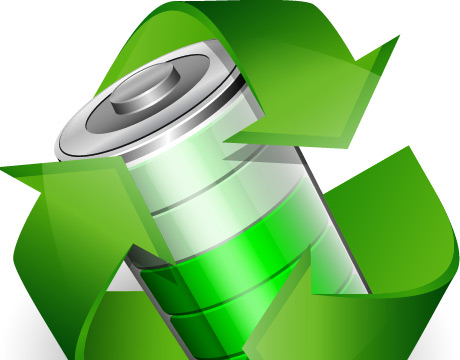New Process Transforms Lithium Battery Recycling
New Process Transforms Lithium Battery Recycling


Researchers at Worcester Polytechnic Institute (WPI) have received a $1-million contract from the United States Advanced Battery Consortium (USABC), a collaborative organization of FCA US, Ford Motor Company, and General Motors, to further develop and scale-up a novel process that WPI developed for recycling lithium-ion batteries.
Led by Yan Wang, an assistant professor of mechanical engineering at WPI, director of the Electrochemical Energy Laboratory, and affiliated faculty member in the Center for Resource Recovery and Recycling, the research team developed a process that can recover any cathode chemistry, with no battery sorting required. This is a vast improvement over the current approach, which involves sorting the batteries by cathode chemistry to avoid mixing incompatible formulations. This labor-intensive and expensive process is complicated by the difficulty of determining the exact material used in a given battery. Wang’s process saves considerable time and labor, making wide-scale recycling of lithium-ion batteries more feasible and profitable.
How It Works
"Batteries are among the costliest components of electric and hybrid vehicles," says Wang. "If we can reduce the cost of lithium-ion batteries using our process, while still recovering and reusing large amounts of materials that are currently being thrown away, we can offer a value-driven path toward improved industry sustainability."
Wang’s recycling process is a closed loop. The first step is fully discharging the batteries and shredding them into small pieces. A sieving process recovers the fine and coarse powders, which include the cathode materials. The powders are chemically leached to recover the lithium, cobalt, manganese, and nickel used in the cathodes. After leaching, the pH of the solution can be adjusted to remove the impurities and then precipitate out new cathode materials with specific compositions, based on industry needs.
“In addition to recovering cathode materials, we also recycle steel, copper, aluminum, graphite and most of the materials used in the batteries,” says Wang. “We can recycle up to 80 percent of the cathode materials from unsorted batteries using this process.”
Moving Forward
The rechargeable lithium-ion battery market was $11.8 billion in 2011 and is expected to increase to $50 billion by 2020. With rapid growth in the consumer electronics and hybrid and electric vehicle markets, lithium-ion batteries will only grow in demand. However, currently they are not widely recycled because it is not economically justifiable; instead they are thrown away and add to the toxicity of landfills.
Wang’s process, however, dramatically improves the economics of recycling lithium-ion batteries.
“When we first started this research a few years ago, many researchers didn’t care much about recycling,” say Wang. “They argued that there weren’t enough lithium-ion batteries to be recycled and it wasn’t economical to recycle them. The basic thought was that this research would only be important in the future. Now, though, people are changing their minds. They know that lithium-ion battery recycling is critical. And, fortunately, now we have the solution.”
The United States Advanced Battery Consortium will finance the scale-up of the process from the current lab scale, which produces coin cells, to a larger process that will be validated using 25 Ah cells made by a world-class battery manufacturer under subcontract to WPI. Wang’s research has shown that his recycling process could cut the cost of cathode materials for vehicle batteries by more than 30 percent.
Cathodes are increasingly made from mixed materials, which makes it very difficult for recyclers to process them because they don’t know the cathode chemistry. “That’s the main reason USABC chose our recycling process,” says Wang. “With our closed-loop process, we can extract the cathode materials and put them right back into new batteries that are equal in quality to the original batteries. And our final product is highly valuable cathode material that can be used to make new batteries. We now have the ability to recycle these valuable materials and keep them out of the waste stream.”
Mark Crawford is an independent writer.
Learn about the latest energy solutions at ASME’sPower & Energy Conference and Exhibition.
We can recycle up to 80 percent of the cathode materials from unsorted lithium-ion batteries using this new process. Prof. Yan Wang, Worcester Polytechnic Institute



